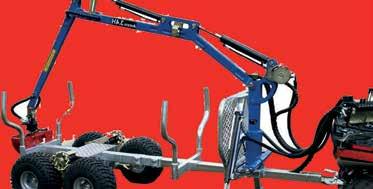
24 minute read
PROFESSIONAL SERVICES
Taking a specialised approach to forest machine finance
by Gordon Larson, EFT Finance
The forestry market has long been recognised as something of a ‘perfect storm’ for anyone trying to secure or offer funding. It is a widely underserved market from mainstream lenders as many just do not understand how the market and the industry works. Firstly, the machinery is expensive in comparison to other industries’ essentials – a brand new harvester from any of the leading brands will cost more than £400,000 with ease, but a groundcare contractor will generally have change from £100,000 after buying a new excavator. That price tag can put lenders off immediately if they don’t understand the industry and the earning potential for the machinery.
Then there is the job they do. Lenders like to lend on assets which they can touch, feel, and repossess if need be, and that they know where they will be at any given time. A forestry machine tends to live a hard life - outside all the time, often in difficult conditions, and if they ever need to be located, it will take some finding. Paying cash and buying a machine outright from the start is always an option, but there most likely there aren’t many forestry players in the UK which have access to up to half a million in cash; therefore, the second-hand market often becomes the first port of call. This of course comes with restrictions of its own, but it can be a useful option for those who want to keep their costs down and could not quite stomach paying a high six-figure sum for something that does not boast five bedrooms, two reception rooms, double garage, and an impressive
Alternative funding methods
outlook in a popular locale.
Even for those who look first in the second-hand trade, is paying cash always the best option? Almost every business in the UK has a common first problem: cash flow. This is particularly so in an industry such as forestry, where income can be seasonal and affected by a variety of external factors.
It is those eccentricities of the marketplace in which we operate – the seasonal and often cyclical nature of incomes; reliance on other industries; influence of political factors on the industry such as weakness of the Pound and import conditions – which means that a specialised and individual approach is not just preferred, but essential for building a sustainable model for operating in forestry. Even something as simple and becoming commonplace like a VAT deferral or a seasonal payment
Determining which method is the most suitable one for each purchase comes down to various factors, including the end goal (e g ownership), the tax implications, and the all-important cash flow. More businesses than ever turn to commercial asset finance to support their needs – the asset finance market funded over 41% of machinery investment in Q2 2019. According to the FLA, this represented an 11-year high.
Bank debt There was a time when if a business wanted to purchase anything, they would make an appointment with their bank manager and discuss their options. Those days seem to be far behind us now for all businesses, as traditional banking is often too cautious and tied up in regulation to take a risk on something that they will never fully understand. High-street lenders tend to overlook forestry, making it difficult to secure funding in this way.
Hire purchase Hire purchase allows the customer to purchase the asset outright by making a fixed monthly payment over a pre-determined length of time (three, four, five years or more). The finance company owns the asset throughout the hire period and when the final instalment is paid, the customer is given the option to purchase, usually for a nominal sum.
Minimum deposit is usually the full VAT associated with the purchase, although in some cases VAT deferrals are also considered. In the wider commercial vehicle and machinery finance market, more than 58% of debt advanced for asset purchases was through hire purchase (FLA, 12 months to August 2019), and it continues to be the most popular method of funding in forestry, with fixed repayment, and the security of ownership at the end of the term.
Leasing While leasing has gained popularity in the personal vehicle market, it is yet to catch on in other sectors. Most would write it off because they expect to have to hand the asset back at the end of the rental period, but if put in place correctly, leasing provides similar levels of flexibility to hire purchase. Finance Lease: The leasing company owns the equipment and effectively the buyer pays a rental for the use of it over a pre-determined period. Generally, the full value, plus some interest, will be paid to the financer over that term, and at the end the “renter” can either continue using the asset and enter a secondary rental period; sell the asset on and keep a portion of the proceeds; or return the asset to the owner/ finance company. Operating Lease: This would be the best option only if the buyer has no desire to continue using the equipment at the end of the rental period. Payments or monthly rentals tend to be slightly lower as the leasing company does not need to achieve the full cost of the equipment over the term as a residual value is built in when they retake possession at the end of the lease.
Leasing can be a useful alternative to Hire Purchase (HP) for the purposes of spreading the payment of VAT. On an HP deal, the buyer must pay the VAT up front but on a finance lease contract, there is VAT added to each monthly rental payment and so effectively the VAT is spread across the lifetime of the agreement, again helping cash flow. Other important features of each option are shown in the table opposite.
schedule can be an extremely useful tool to protect cash flow requirements and help with weathering difficult market conditions.
A specialised finance approach is therefore essential for any business operating in forestry, particularly with current market conditions making things difficult for many, and impossible for some. In order to find the right option for each individual set of circumstances, it is important to seek advice from accountants on the various treatments, but it helps also to have an advisor who can help to put in place the right option for each circumstance, and at the best rate available.
EFT Finance is an independent finance brokerage, with a particular interest in the forestry industry. We can help with any new or used asset purchase including harvesters, forwarders, woodchippers, access and material handling, and any vehicles such as vans, pickups or trucks. We can arrange facilities on both new and used assets, and whether purchasing from a dealer, or in some circumstances when buying from another operator or private individual. gordon@eftfinance.co.uk

Products Hire Purchase Finance Lease Operating Lease Cash Purchase Comments
Initial Deposit Often VAT No No Yes VAT is usually the minimum required on an Required? only HP contract, however there are often opportunities to defer the VAT
Treated as Yes Yes No Yes Depending on the accounting standards Capital employed, a finance lease can in some cases Expenditure? be treated as capital expenditure for relief.
Regularity of Yes Yes Yes No There may be documentation fees at the Payments? beginning and option to purchase fees or balloon/residual payments at the end, but these are usually clearly defined and set from the start.
Early Exit or Yes Yes Yes No All can generally be extended, but leases are Extension traditionally a bit trickier to exit than Hire Options? Purchase. On an HP agreement, the borrower can effectively ask for a settlement at any point within the agreement, usually without lease, they are likely to be required to pay at least 50% of the remaining rentals to exit the contract early.
Balance Sheet? Yes Yes Yes Yes Traditionally, an operating lease would not Entry have shown on the balance sheet, but would instead have rentals affecting only the P&L. However as of January 2019 under IFRS16, most leased Plant, Property and Equipment (PPE) now have to be included as an asset on the books, following the new ‘right of use model.


The UK's leading provider of Forest Surveys
Barle Valley Forestry Ltd Forest Surveys

Plo$ng & Produc-on Surveys Timber Cruising & Woodland Tariffing Timber Quality Assesments GIS Mapping & Data Collec-on Fixed Monitoring, Research Projects & AIribute Surveying
Quality, function, value and robust design. Built-in as standard
Bomford Turner offer a range of flail mowers and rotary toppers from simple grounds-care machines to agricultural-industrial mowers for municipal and airport landscape maintenance.
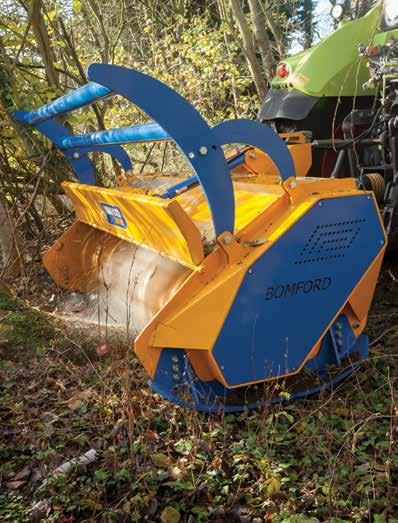
Proven Landscape Technology
Landscape CultivationRemoteForestry
Tel +44 (0) 1789 773383 E-mail info@bomford-turner.com Website www.bomford-turner.com
Gillian Mair, Brodies Solicitors
From 6 April next year, the information that employers are legally required to provide in writing to their workforce will change.
Current position Under current legislation, employers must give employees whose role will last for at least one month a written statement of certain terms of their employment: this is sometimes referred to as a ‘section 1 statement’ as the obligation to provide this statement comes from section 1 of the Employment Rights Act 1996. Except in limited circumstances, employers must give this statement to an employee within two months of the beginning of their employment.

A number of different factors are relevant when determining employment status, including the level of control operated by the employer; whether there is an obligation to offer and accept work; and whether the individual has to perform the work personally.
In some cases, an individual’s employment status will be straightforward. However, there are many grey areas, particularly around casual workers and contractors and these individuals may, depending on the circumstances (and regardless of what is stated in any contractual documentation), be ‘workers’. obligation to offer and accept work; and whether the individual has to perform the work In some cases, an be straightforward. However, there are many grey areas, particularly around casual workers and contractors and these individuals may, depending on the circumstances (and regardless of what is stated in any contractual documentation), be ‘workers’.
Changes from 6 April 2020 From 6 April 2020, the right to be entitled to a written statement of certain terms of engagement will be extended so that all ‘workers’ will be entitled to receive such a statement, in addition to employees. Additional information will also require to be provided to employees and workers in this ‘section 1 statement’ over and above the information that must be provided to employees under current legislation. The format in which some of the information has to be provided will also change.
What is meant by ‘workers’? There are three basic categories of individuals who provide services in the UK: Employees: At one end of the spectrum, these individuals have the most comprehensive employment rights and protections. Self-employed: By contrast, the genuinely self-employed have very little protection; they are in business on their own account but have the advantages of fl exibility and paying different levels of income tax and national insurance contributions. Workers: Somewhere in the middle sit ‘workers’, an intermediate category created by employment legislation. Workers’ employment rights are more limited than employees but, for example, they have the right to paid annual leave and the minimum wage.
So what do the changes mean? Essentially, from 6 April 2020, a signifi cant number of individuals who form part of the workforce (ie workers) will have a new statutory right to be issued with certain written information relating to their engagement.
Employees and workers starting work on or after 6 April 2020, will also have to be provided with more information in writing than what is currently provided to employees at present. For example, employers will have to provide additional particulars in relation to:
the days of the week the employee/ worker has to work; whether or not such hours or days may be variable, and if so how they vary or how that variation is to be determined; any other paid leave (including, for example, paid family leave such as maternity and paternity leave); any other benefi ts that are provided by the employer that are not already included in the statement; any probationary period including any conditions and its duration; and any training entitlement provided by the employer. The format in which the information contained within a section 1 statement has to be provided is also changing. In some cases, the section 1 statement itself won’t have to provide the detail of all of the particulars, and can refer the employee or worker to the provisions of other documents, as long as these are reasonably accessible.
The obligation to provide the section 1 statement to workers and employees will apply regardless of the length of the engagement and most of the information will need to be issued no later than the start of the engagement, which is earlier than required at present.
As most employers tend to include the required information in contracts of employment, it is likely that as a result of these changes, employers will need to update their contractual documentation for employees and workers, and review their timescales for issuing contracts. Failure to provide this information may result in an employee or worker making a complaint to an employment tribunal, seeking a declaration in relation to the terms of their engagement. In some circumstances where an employee successfully raises another type of employment tribunal claim against their employer (for example, a claim for unlawful deduction of wages or unfair dismissal), an employee or worker may also be awarded compensation of up to four weeks’ pay for the failure to provide information (capped at the relevant statutory rate for each week’s pay) in addition to a declaration. apply regardless of the length of the engagement and most of the information will need to be issued no later than the start of the engagement, which is earlier than required at present.
to include the required information in contracts of employment, it is likely that as a result of these changes, employers will need to update their contractual documentation for employees and workers, and review their timescales for issuing contracts.
INFO
If you would like to discuss any of the above or would like help with revising your contractual documentation, contact Gillian Mair, Senior Associate at Brodies LLP. gillian.mair@brodies.com 0141 245 6250.
Brodies Workbox Guidance on recruiting employees and workers and drafting associated contractual documentation can also be found on Brodies Workbox, an online platform that provides up-to-date, practical HR advice, templates and tools. Members of Confor can sign up for a free trial by contacting Gillian Mair or emailing employment@brodies.com
Professional harvesting to maximise the value of your investment.

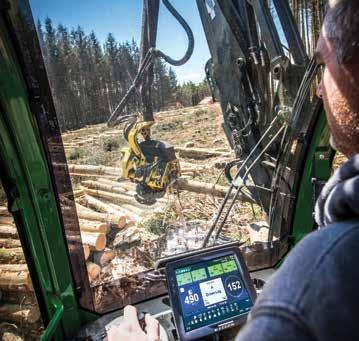
www.egger.com/forestry


We possess all the experience and skills necessary to undertake any size, type and complexity of felling operation, including thinning and clearfells. Through our strategic sawmill partnerships we bring a range of benefits to our clients, maximising the return on their investment. Why not call us on t 01434 611038 to discuss your needs.
● Mulching mowers from 10HP-350HP ● Tough & versatile ● Many attachments available for every forestry job


Tough Tools for a Tough Job.
Purchase direct from the UK Importer:

t: 01892 890364 e: info@lameng.com Lamberhurst Engineering Ltd Priory Farm • Parsonage Lane Lamberhurst • Kent TN3 8DS www.lameng.com
EGGER_Harvesting_QP.indd 1

18/01/2018 12:12
Suppliers of new and used forestry firewood and fencing machinery
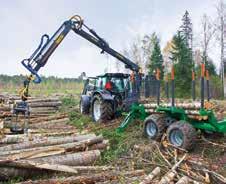

Contact us for a demo at our Forestry Yard
Alstor mini forwarders • Rabaud Firewood processors • Saw benches • Kindling machines • Chain winches • Farma cranes and trailers • Log peelers & pointers • Log splitters 14-80 tonnes • Cone splitters • Cleaving splitters • Grader blades
T. 01746 718456 M. 07966 365157 www.homeforestry.co.uk E. nathan@homeforestry.co.uk Home Forestry llp, Willowdene Farm, Chorley, Bridgnorth, Shropshire WV16 6PP New Rabaud Xylotrail forwarding trailers

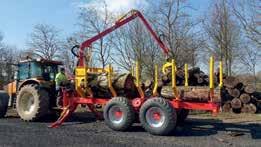

Diversifying into ecotourism? Protect your income
James Innes of Lycetts’s Rural Division
The introduction of the post-EU Environmental Land Management System (ELMS) that will essentially reward landowners for delivering environmental benefits also opens up opportunities for woodland and forest owners looking to diversify into tourism-related activities.
The prolonged uncertainty over Brexit has had an unprecedented impact on the UK’s rural economy forcing many to re-evaluate and dramatically shift their long-established business models. Protecting and bolstering future income means that diversifying into unknown territory is often the most viable option.
The good news is that all around the UK, diversified businesses are indeed thriving – offering rural enterprise a much-needed lifeline outside their limited or declining traditional income.
The Farm Business Survey 2015/16 claimed the total income from diversification activities was £580m, demonstrating that generating alternative revenue from the land can be a lucrative move.
Go green to get out of the red The obvious transition is tourism – but with a green twist. Eco-tourism will ensure that landowners are fully exploiting the current zeitgeist of more people wanting life-changing adventures, authentic experiences and staycations, not package-holidays. Diversifying into environmentally positive activities can also help secure much-needed environmental ‘rewards’ during and after the transition to ELMS.
Eco tourism is defined by The International Eco-tourism Society as “responsible travel to natural areas that conserves the environment, sustains the well-being of the local people, and involves interpretation and education”. And few are better placed than woodland owners to use this perfect platform of nature and wildlife in their business reincarnation using the vast acres of trees and arboreal knowledge already at their disposal.
As the UK population becomes more environmentally conscious and aware of the detrimental effects of mass-market tourism, this opens Woodland owners can exploit the current zeitgeist for more adventurous ‘staycations’

up opportunities that make the tourism industry more sustainable culturally, environmentally and economically.
This is supported by a recent Booking. com survey which found that 86% would engage with actives that counteract the environmental impact of their trip - whether that be helping with countryside clean-up projects or consciously booking more ecofriendly stays.
Protect the environment, protect your income These political and social trends certainly pave the way to make money from woodland.
From forest schools to glamping holidays, trekking and wildlife retreats to treetop zip wire adventures, food and music festivals, diversifying into new, greener tourism-related activities can secure a long-term business future.
However, these new ventures come with new risks and challenges – financially and environmentally. Critical gaps in knowledge and experience are inevitable during the >>

Quality Machinery Speaks for itself


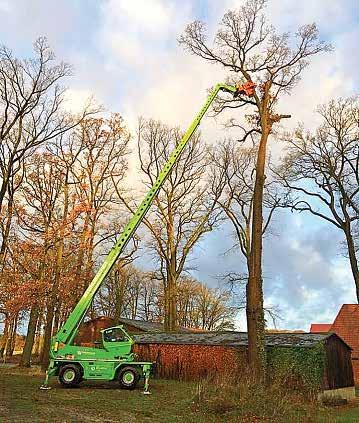
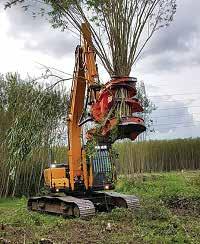
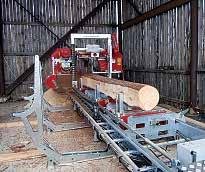
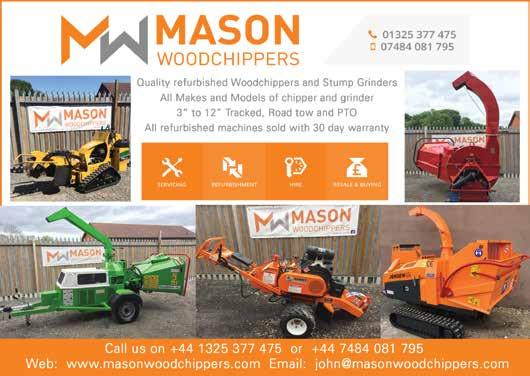
Quality refurbished woodchippers and stump grinders All makes and models of chipper and grinder 3” to 12” tracked, road tow and PTO All refurbished machines sold with 30 day warranty
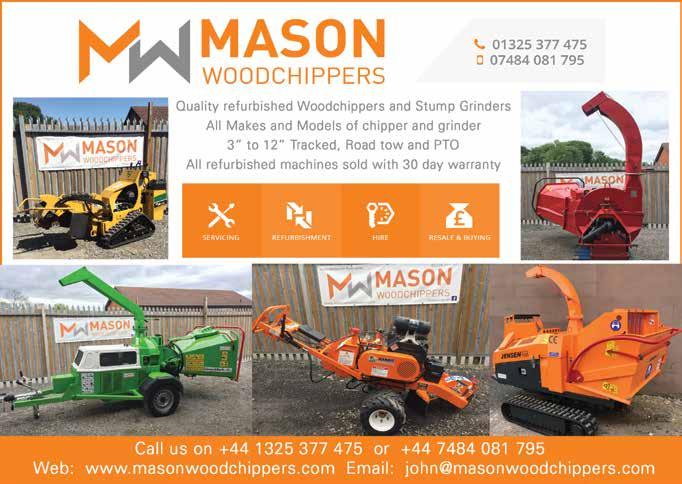
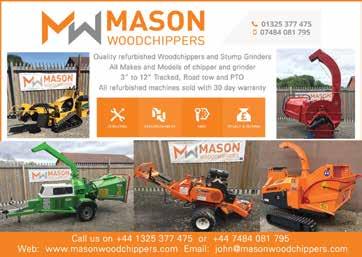
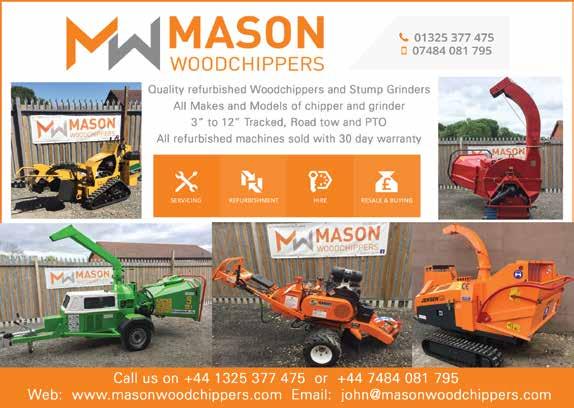
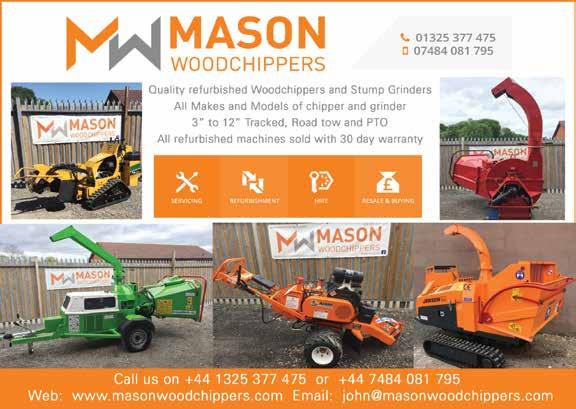

Call us on 01325 377 475 or 07484 081 795 Email john@msonwoodchippers.com www.masonwoodchippers.com
www.marshalllogging.co.uk

set-up and transitional period.
Diversifi cation can create substantial revenue returns but it requires shrewd business planning along with judicious risk management. Stringent health and safety assessments and prudent insurance arrangements are essential in protecting against potential liabilities and unforeseen uninsured risks and public liability claims.
For any business looking to use green credentials as a proposition, protecting the world’s natural capital (natural assets such as geology, soil, air, water and all living things) must be a business priority – particularly to comply with new agrienvironment schemes which will be prioritised under ELMS regulations. Woodlands and forests provide vital ecosystem services such as climate regulation and natural fl ood defences, habits for wildlife and the pollination of crops by insects so their protection must be at the forefront of all eco-tourism initiatives. >>
Onwards and upwards planning Getting the right planning permissions from the council is a top priority but early intervention from The Environment Agency will also ensure a treehouse project or treetop adventure complies with sustainable development.
As landowners fulfi l the demand for more unusual experiences – such as woodland yoga, and llama trekking – and niche accommodation such as activity lodges to holistic retreats and luxury treehouses, gaps in knowledge will become even more pronounced and varied, and the need to seek specialist advice will become greater.
Some new ventures come with risks and challenges that will require the help of expert professionals

Be mindful that from a business insurance perspective, holiday-let policies may not be adequate for the more non-traditional accommodation types - specialist cover may be needed.
From a risk management perspective, with the increased risk of fi re in woodlands, it’s essential to have a fi re plan in place and growing timber is adequately insured. A specialist broker can offer valuable consultancy advice, helping to identify such liabilities and avoid the pitfalls of venturing into an unknown fi eld of business. Lycetts has almost 60 years’ experience advising and insuring rural and diversifi ed businesses. From risk management, HSE compliance and specialist insurance advice, we can help identify and avoid costly risks and business-damaging downfalls.
After all, forewarned is forearmed and working closely with experts who can offer impartial advice from the offset will make diversifi cation damage limitation a priority for any new tourism venture.
james.innes@lycetts.co.uk www.lycetts.co.uk
Kindling & Firewood Processors
► Circular saw & chainsaw processors ► 6”, 8” & 10” length kindling options ► Up to 14” capacity ► Huge productivity ► Finance available ► Designs specifically for processing UK timber
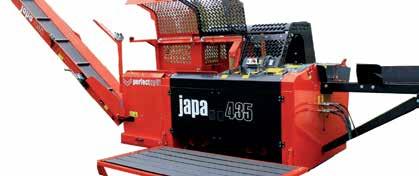
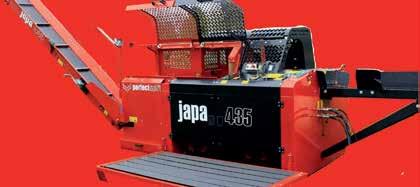
BUY LARGE QUANTITIES OF STANDING TIMBER Unmanaged woodland? Overstood coppice starting to fall over? Timber growth stopped due to much competition? ARE ALWAYS LOOKING TO BUY LARGE QUANTITIES OF STANDING TIMBER


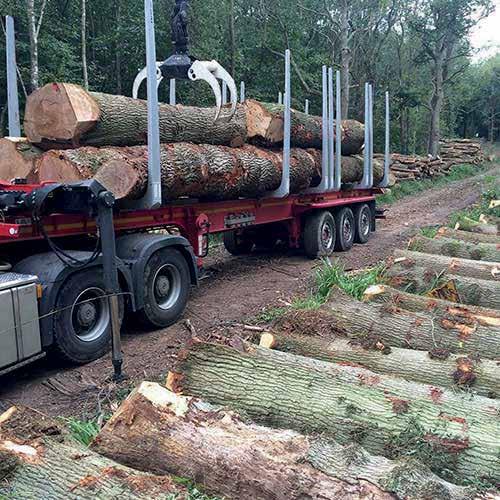


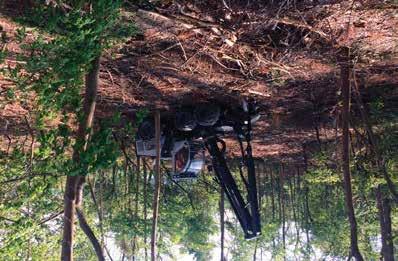

South East Forestry: We buy – We fell – We sell Call John Davies on 01580 819179 or 07759 567801 www.southeastforestry.co.uk Unmanaged woodland? Overstood coppice starting to fall over? Timber growth stopped due to much competition?
We are looking to purchase large volumes of woodland grown standing timber from unmanaged and managed woodlands. • All hardwood species sought • Oak, Ash, Sweet Chestnut, Hornbeam, Sycamore • Thinning, coppice and clear-fell • All softwood species of interest • Felling licences arranged to meet your woodlands needs
FISA refreshes ‘Guidance on Managing Health and Safety in Forestry’ (GMHSF)
Everyone in the forestry industry has a part to play in making the industry a safe place to work; read this guidance and know your own responsibilities.
The refreshed 2019 FISA GMHSF is the core guidance for the forest industry. This guidance informs all those working in the timber supply chain and their stakeholders, by clearly setting out roles and responsibilities for all, from landowner/agent; forest works manager; contractor (including hauliers and industry supporting trades) to workers. This is the main guidance that you should refer to in the industry. The guide is now clearly split into sections making your responsibilities clear and easier to follow.
The guide reinforces the message of the need for site planning, competence and maintaining competence for all roles.
The ‘hot topic’: 806 Welfare Guide published
Forestry workers often work in isolated and challenging locations and are expected to undertake diffi cult tasks to a professional standard. The provision of facilities for their general welfare has been required by law for over 20 years. The FISA Worksite Operations Working Group in consultation together with forestry safety professionals and the wider industry have produced the FISA 806 Welfare Safety Guide to assist duty holders to understand what the existing Workplace (Health, Safety and Welfare) Regulations 1992 require. This FISA guide also gives clear examples of types of welfare provision that are considered reasonably practicable on forestry sites. These examples demonstrate how on larger and more complex sites welfare facilities can, as well as provision of welfare facilities, provide space for seated team discussion, planning and meetings, an area to store site paperwork and host drying facilities.
This FISA guide is new to the forestry industry and is released with request for feedback to FISA. Comments will be fed back to the Worksite Operations Working Group and the guide will be reviewed eighteen months after release. Having this review period will assist in getting the guide right for the industry; this is important as we want to encourage the industry to step forward and improve the approach to welfare provision on forestry sites.
Coming soon: FISA 505 Traction Assist Guide
Traction winches are now out in the industry, and this guide



outlines the key safety points with this type of kit. This document considers traction winches when used to reduce the tractional force transmitted by the machine to the ground surface. It is useful for forestry and other tree work applications including harvesting, silvicultural and ground preparation operations. www.ukfi sa.com
Timber ExtractionTimber Extraction
► Swedish timber trailers and cranes ► From 1.3 to 15 tonne capacity ► Full range of telescopic cranes ► Minimal ground impact and damage ► Specialist trailers for use with ATVs


